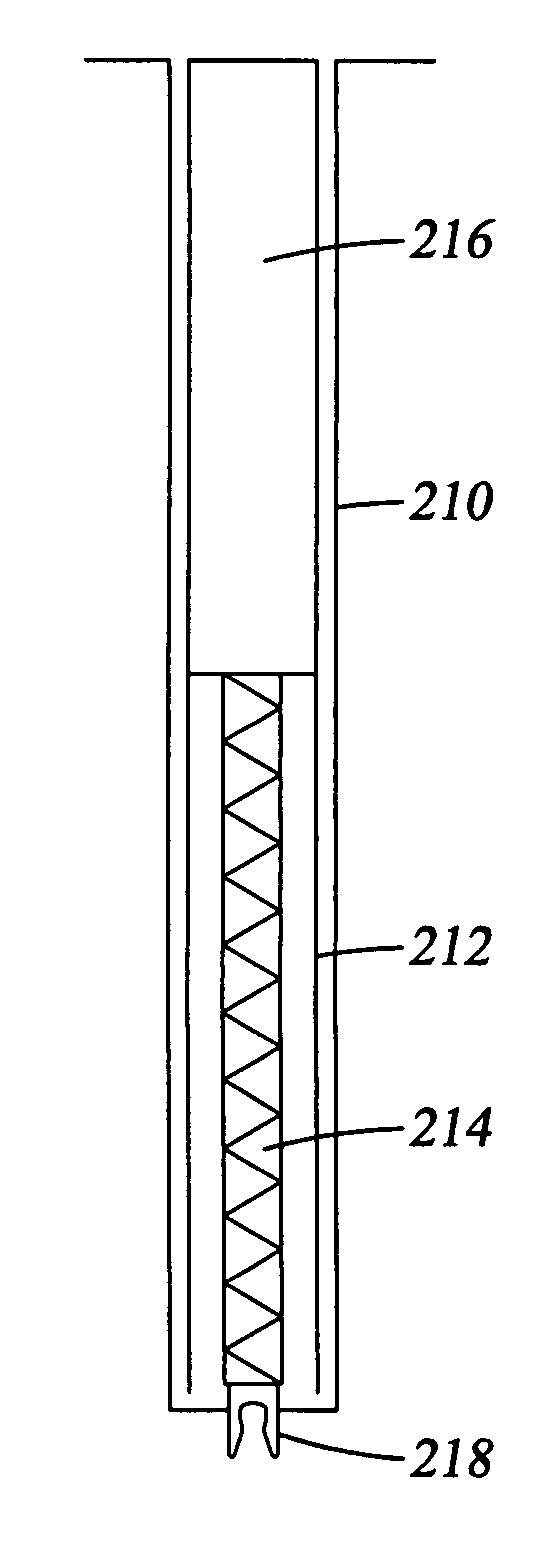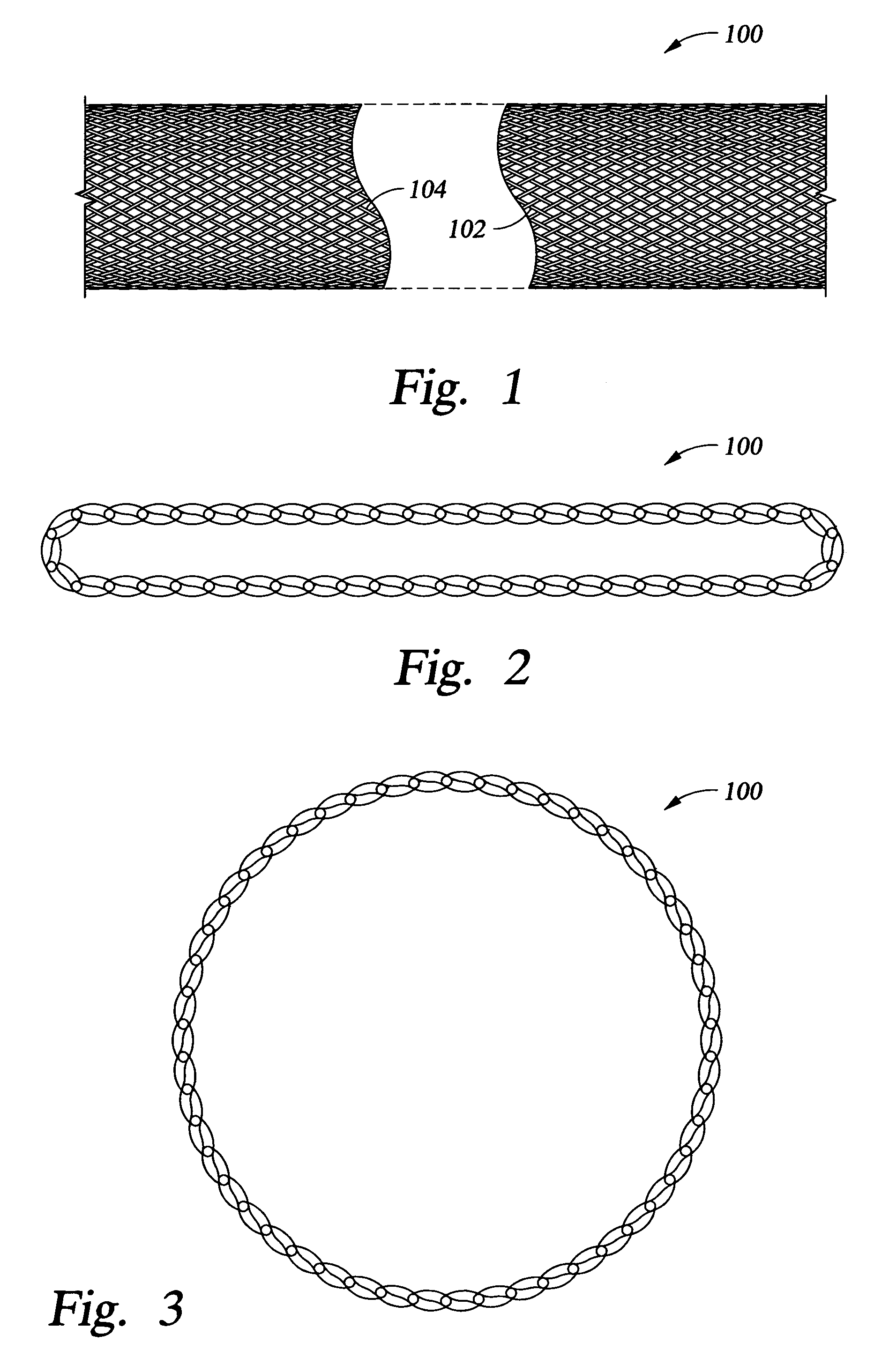Systems and methods for placing a braided, tubular sleeve in a well bore
a tubular sleeve and well bore technology, applied in the direction of braid, wellbore/well accessories, mechanical equipment, etc., can solve the problems of sleeve damage, sleeve cannot be hardened as desired, etc., and achieve the effect of minimizing particulate flow, easy optimization, and high hardness
- Summary
- Abstract
- Description
- Claims
- Application Information
AI Technical Summary
Benefits of technology
Problems solved by technology
Method used
Image
Examples
example 1
[0047]Several samples of a 3″ long and 1″ diameter fiber glass biaxial tubular fabric obtained from A&P Technology of Cincinnati, Ohio was soaked in a variety of solutions for 3 to 5 minutes as shown in Table 1. All the solutions were made by adding the amounts indicated in Table 1 to a 0.70 milliliter (ml) solution of FWCA hydroxyethylcellulose (HEC) available from Halliburton Co. The viscosity of each solution was 710 centipoise (# 1 Spindle @ 6 revolutions per minute) using a Brookfield viscometer.
[0048]After soaking, each sample was allowed to drain in a beaker in open air. As presented in Table 1, the flexibility of the fibers and the coverage of open network in the braided fabric of each sample were judged relative to each other. The most desirable solution formulations were determined to be the ones that covered the tubular fabric in a thick and homogeneous manner during the treatment stage and left a good film over the entire fabric while retaining the flexibility of the fab...
example 2
[0050]The treated, dried glass fiber tubular samples 8 and 9 were heated at 160° F. in a 10 weight % ammonium chloride solution for 24 hours to achieve curing of the melamine resin present in the formulation. The samples were taken out and examined for enhanced stiffness of the fabric. While both tubular samples exhibited increased stiffness, sample 8 was slightly stiffer than sample 9.
PUM
 Login to View More
Login to View More Abstract
Description
Claims
Application Information
 Login to View More
Login to View More - R&D
- Intellectual Property
- Life Sciences
- Materials
- Tech Scout
- Unparalleled Data Quality
- Higher Quality Content
- 60% Fewer Hallucinations
Browse by: Latest US Patents, China's latest patents, Technical Efficacy Thesaurus, Application Domain, Technology Topic, Popular Technical Reports.
© 2025 PatSnap. All rights reserved.Legal|Privacy policy|Modern Slavery Act Transparency Statement|Sitemap|About US| Contact US: help@patsnap.com



